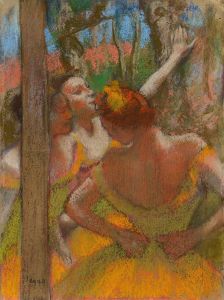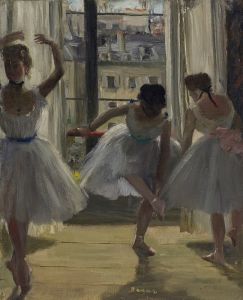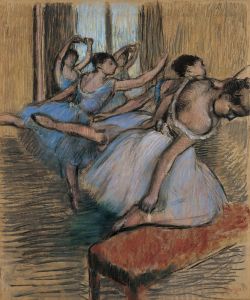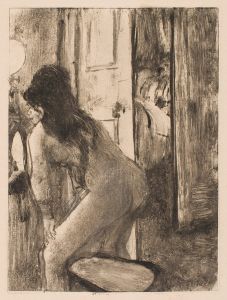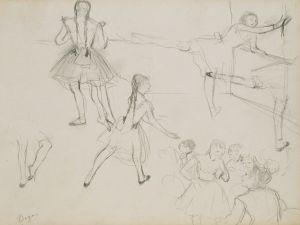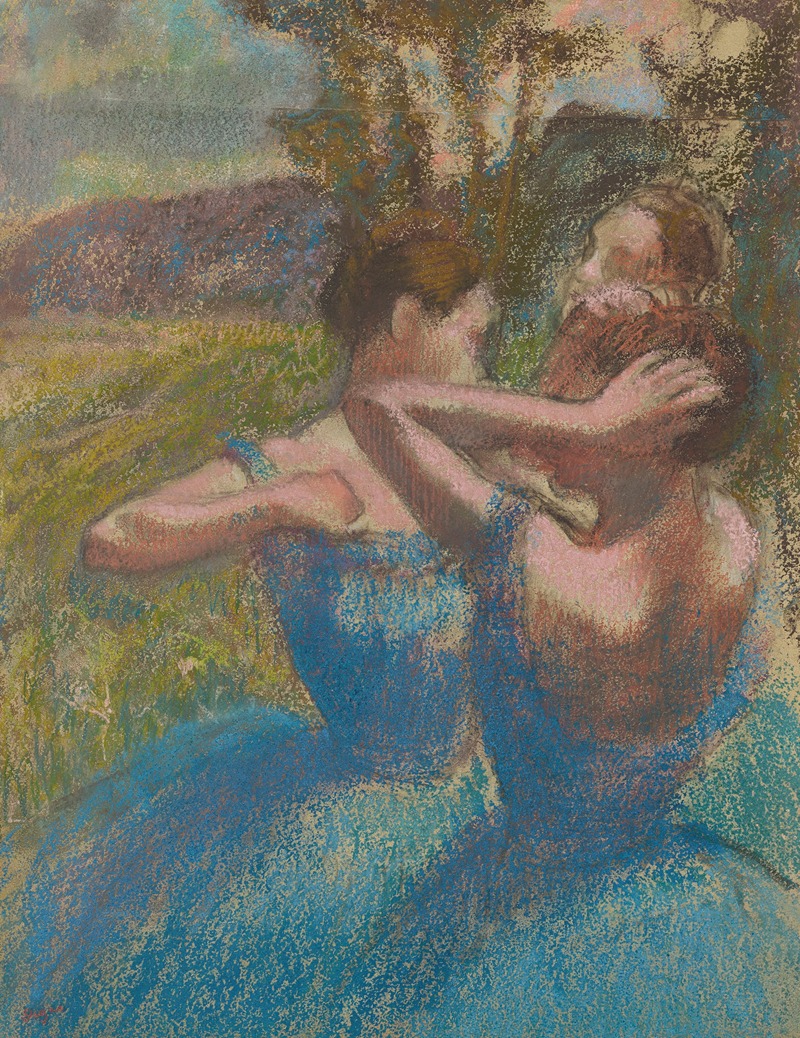
Trois danseuses
A hand-painted replica of Edgar Degas’s masterpiece Trois danseuses, meticulously crafted by professional artists to capture the true essence of the original. Each piece is created with museum-quality canvas and rare mineral pigments, carefully painted by experienced artists with delicate brushstrokes and rich, layered colors to perfectly recreate the texture of the original artwork. Unlike machine-printed reproductions, this hand-painted version brings the painting to life, infused with the artist’s emotions and skill in every stroke. Whether for personal collection or home decoration, it instantly elevates the artistic atmosphere of any space.
"Trois danseuses" (Three Dancers) is a notable pastel drawing by the renowned French artist Edgar Degas, created around 1899. Degas is widely celebrated for his depictions of ballet dancers, and this work is a quintessential example of his fascination with the subject. The drawing captures three ballerinas in a moment of rest or preparation, showcasing Degas's keen observation of the human form and movement.
Edgar Degas (1834-1917) was a prominent figure in the Impressionist movement, although he preferred to be called a Realist or Independent. His works often focused on scenes of contemporary life, particularly the world of ballet, which he depicted in numerous paintings, drawings, and sculptures. Degas's interest in ballet began in the 1860s and continued throughout his career, making dancers one of his most enduring subjects.
"Trois danseuses" exemplifies Degas's mastery of pastel, a medium he increasingly favored later in his career. Pastel allowed him to achieve a remarkable vibrancy and immediacy in his work, capturing the delicate interplay of light and color. In this drawing, Degas employs a rich palette of blues, pinks, and whites, creating a luminous effect that highlights the grace and elegance of the dancers.
The composition of "Trois danseuses" is both dynamic and intimate. The three figures are arranged in a diagonal line, creating a sense of depth and movement. Degas's use of line and shading emphasizes the contours and musculature of the dancers' bodies, conveying their physicality and the discipline of their art. The background is rendered in loose, expressive strokes, providing a contrast to the more detailed depiction of the figures.
Degas's approach to depicting dancers was both innovative and influential. He often portrayed them in informal, behind-the-scenes moments, rather than in idealized, on-stage performances. This perspective offered a more realistic and humanized view of the dancers, highlighting their hard work and dedication. "Trois danseuses" is a prime example of this approach, capturing a candid moment that reveals the dancers' concentration and poise.
The drawing is housed in the Musée d'Orsay in Paris, which holds one of the most extensive collections of Degas's works. The museum's collection includes numerous other pastels, paintings, and sculptures by the artist, providing a comprehensive overview of his career and artistic development.
Degas's influence on the art world extends beyond his lifetime. His innovative techniques and unique perspectives have inspired countless artists and continue to be studied and admired. "Trois danseuses" remains a testament to his skill and vision, offering viewers a glimpse into the world of ballet through the eyes of one of its most passionate observers.
In summary, "Trois danseuses" by Edgar Degas is a masterful pastel drawing that captures the elegance and discipline of ballet dancers. Created around 1899, it reflects Degas's deep engagement with the subject and his innovative use of pastel to convey light, color, and movement. The drawing is part of the collection at the Musée d'Orsay, where it continues to be appreciated by art lovers and scholars alike.







